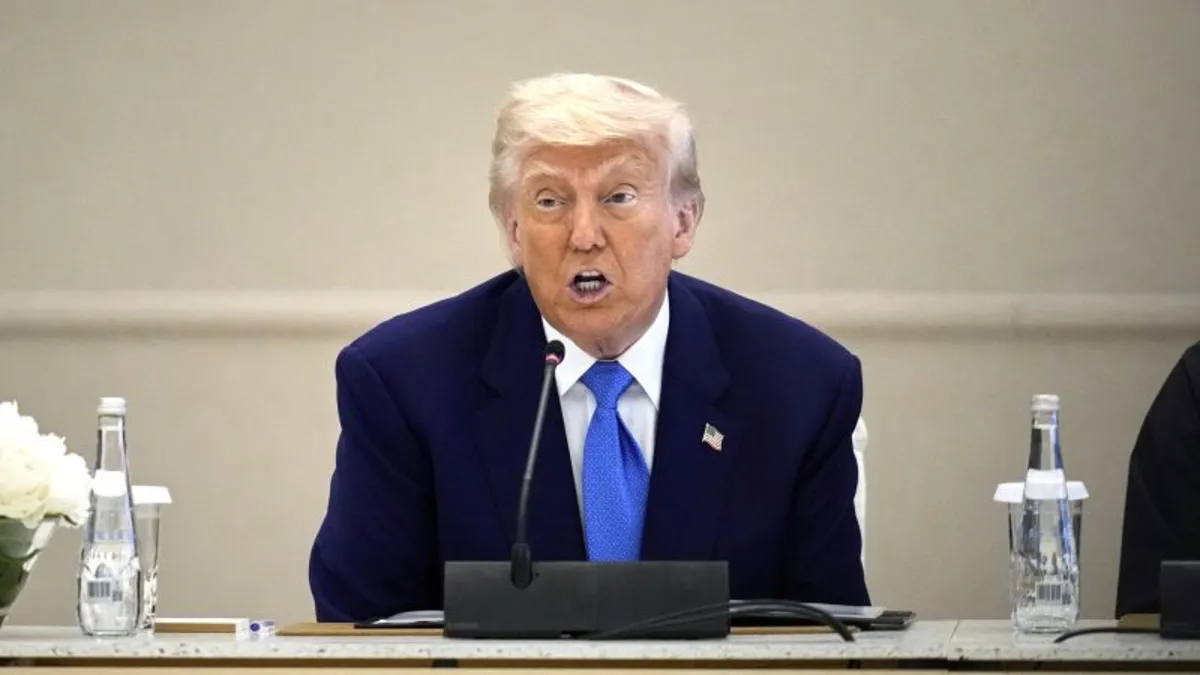
If you thought President Donald Trump’s trade war had come to a conclusion, new developments suggest otherwise. After concluding his recent trip to the Middle East, Trump announced that tariffs are set to increase again. During a business roundtable in Abu Dhabi, he expressed that trade negotiations were progressing too slowly to accommodate all countries eager to establish new trade agreements with the United States.
Trump revealed that he would allow other nations a few more weeks to negotiate, after which Treasury Secretary Scott Bessent and Commerce Secretary Howard Lutnick would inform America’s trading partners of their new tariffs. “We have, at the same time, 150 countries that want to make a deal, but you’re not able to see that many countries,” Trump stated. He emphasized that in two to three weeks, letters would be sent out detailing the tariffs that countries would face to conduct business in the United States.
Previously, on April 9, Trump had paused his significant reciprocal tariffs, initially announced on "Liberation Day" (April 2), for a 90-day negotiation window. His administration has received offers from around 100 countries to negotiate trade deals, presenting a significant challenge for U.S. trade negotiators as they strive to reach agreements swiftly.
Without successful negotiations, Trump retains the option to impose reciprocal tariffs, which could reach as high as 50%. While these tariffs are termed reciprocal, smaller nations with large trade deficits with the U.S. could face disproportionately high tariff responsibilities. “I guess you could say they could appeal it, but for the most part I think we’re going to be very fair, but it’s not possible to meet the number of people that want to see us,” Trump elaborated.
This isn’t the first time Trump has proposed setting tariffs for countries that fail to negotiate new terms. In a meeting on April 23, he indicated that his administration would establish tariffs for non-compliant countries within the following weeks. “In the end, I think what’s going to happen is we’re going to have great deals, and by the way, if we don’t have a deal with a company or a country, we’re going to set the tariff,” Trump noted.
So far, the Trump administration has made strides in announcing two new frameworks for trade negotiations, resulting in reduced tariffs with other nations. The first was with the United Kingdom and the second with China, negotiated in Geneva. Trump’s trade representatives are currently engaged in discussions with approximately a dozen countries and have indicated that they are close to finalizing several more agreements.
Countries such as India and Japan are in the process of nearing a framework, alongside South Korea, although changes in government there may further delay negotiations. However, it remains unclear what new tariffs Trump will impose on countries failing to finalize deals in the coming weeks. It is uncertain whether these new tariffs will replace the paused reciprocal tariffs or serve as a temporary measure while discussions continue.
Currently, the United States maintains a 10% universal tariff on nearly all imported goods, with higher rates for specific products. While some officials have referred to this 10% tariff as a “baseline,” Trump has disagreed, indicating that importers could face tariffs exceeding 10% for goods from most countries. Following the recent announcement of the trade framework with the UK, Trump suggested that other countries would not receive similarly favorable terms, hinting that their tariffs would be higher.
According to Fitch Ratings, even with the temporary tariff pause, the U.S. still holds an average tariff rate of 13% on imported goods, significantly higher than the 2.3% average before Trump’s presidency. The potential for tariffs to increase is substantial, as Trump has previously stated he would consider tariffs as high as 50% within a year.
Trump’s inconsistent stance on tariffs has created a climate of uncertainty for both businesses and consumers. While the likelihood of a U.S. recession has decreased as Trump softened some of his aggressive trade policies, mainstream economists still suggest the odds are approximately a coin flip. This uncertainty has caused fluctuations in the stock market, with prices declining before rebounding as Trump showed a willingness to engage in trade negotiations.
Despite Trump’s claims of rapidly constructing numerous trade deals to establish fairer trade practices and bring manufacturing back to the U.S., the reality is that actual trade agreements often take years to finalize. These deals require extensive negotiations that address intricate details regarding various goods and non-tariff barriers, alongside significant political considerations.
Trump’s admission that hundreds of deals cannot be finalized in a short timeframe underscores the limitations of using tariff threats as a strategy to achieve quick concessions from trading partners. As it stands, American consumers and businesses may soon face higher prices for goods not produced domestically as the trade landscape continues to evolve.